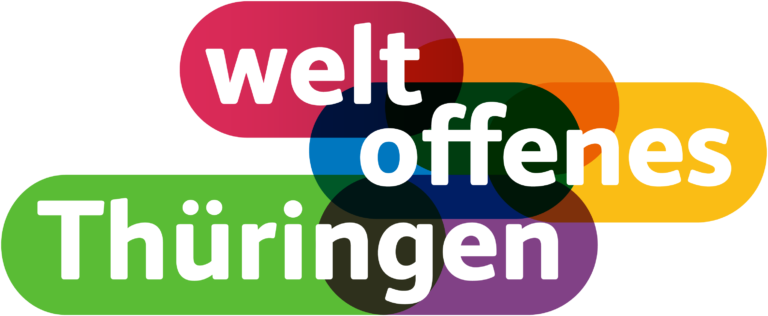Human decomposition: recycling nutrients
Decomposition is a fundamental process on our planet that sustains life by recycling dead biological material1, releasing nutrients and carbon into the soil, benefiting the ecosystem. As cadavers break down, they create concentrated islands of fertility in the soil, enhancing soil microbial activity, nematode abundance, and overall biodiversity. These islands serve as specialized habitats for various organisms, thereby boosting biodiversity in terrestrial ecosystems. Animal decomposers must predominantly break down proteins and lipids, requiring a specific metabolic repertoire1.
Microbial decomposers: Is there a universal network?
Microbial breakdown, facilitated by microorganisms like bacteria and fungi, plays a pivotal role in decomposing organic matter such as dead plants and animals into simpler compounds. However, little is known about how decomposer microbial communities assemble, interact, or function within ecosystems. Previous studies indicate that the microbial community response over the course of terrestrial human cadaver decomposition undergoes a substantial microbial community change that is repeatable across individuals2–6, that is somewhat similar across different soil types2 and robust to scavenger activity4. This prompts questions about the existence of universal microbial decomposer networks responsive to mammalian remains and whether climate, geographic location, or season influence the assembly processes and interactions of microbial decomposers.
Unlocking the microbial ecology black box for human decomposition
A research group around Jessica L. Metcalf at Colorado State University, USA, aimed to assess whether previously identified temporal trends in microbial decomposer communities are applicable across varying climates, geographic locations, and seasons7. They monitored the decomposition process of human bodies across three body farms in Colorado, Texas, and Tennessee, encompassing two different climate types. The human bodies were fully exposed to all weather elements and invertebrate scavengers throughout the study. To elucidate microbial ecological responses within the initial 21 days postmortem, the researchers sampled skin surfaces (hip and face), gravesoil (near the hip and face) and non-decomposition soil as control. They conducted a multi-omics approach: Metagenome assembly was performed to analyze the genetic material, integrating this genomic data with information on the metabolites produced during decomposition. This integration aimed to identify the relationship between different types of microorganisms and their specific functions in the decomposition process.
The cadaver-derived nutrient pool
Cadavers undergoing decomposition release a complex nutrient pool comprising high inputs of nitrogen, carbon, and phosphorus1,2,8, resulting in the death and restructuring of nearby plant life1,9. To characterize the cadaver-derived nutrient pool, the researchers used liquid chromatography with tandem mass spectrometry (LC–MS/MS) in an untargeted metabolomics approach. The focus was on investigating the metabolite pools associated with decomposition skin and gravesoils.
The LC–MS/MS data was processed with MZmine210, and the results were exported to GNPS for Feature-Based Molecular Networking analysis11. The spectra were searched against GNPS spectral libraries for molecular annotation (annotation levels 2–312). If available, the spectra were compared to chemical standards (annotation level 112). Spectra were also imported to SIRIUS for molecular formula annotation with ZODIAC13. A final list of 604 formula identifications was generated by merging ZODIAC identifications with library hits from GNPS.
ZODIAC improves the ranking of formula candidates based on fragment similarities in derivative networks from complete biological datasets. Organisms produce related metabolites derived from multiple but limited biosynthetic pathways. The relation of the metabolites is reflected in their similarity. Those similarities are in turn reflected in joint fragments and losses between the fragmentation trees and can be leveraged to improve molecular formula identification of the individual molecules.
The researchers assigned major biochemical classes to the molecules on the basis of the molar H:C and O:C ratios14. As classification based solely on molecular ratio is rather limited in its accuracy, compounds were labeled as chemically similar by appending ‘-like’ to their assigned class (e.g., protein-like). Unfortunately, they did not use CANOPUS15, the MS-based compound class prediction in SIRIUS.
CANOPUS predicts the compound classes from the molecular fingerprint predicted by CSI:FingerID using a deep neural network16. For full biological datasets, CANOPUS provides a comprehensive overview of compound classes present in the sample and allows for comparisons between different cohorts at compound class level.
First proteins, then lipids
The profiles were mainly composed of compounds resembling cadaver-derived lipids and proteins, alongside plant-derived lignin-like compounds. The influx of lipid- and protein-rich nutrients serves as an ecological disturbance, attracting scavengers and initiating the assembly of a specific microbial decomposer community. In the initial weeks of decomposition, recalcitrant lipid-like and lipid-derivative nutrients accumulated in the soil. Soil decomposer microbial communities preferentially utilize more labile compounds like amino acids and possibly glycogen, leaving less-labile compounds such as lipids in the system. As decomposition progresses, both cadaver-associated soil and skin profiles become enriched in various compounds, such as linoleic acids, aleuritic acids, palmitic acids, long-chain fatty acids, fatty amides, and general amino acids. This suggests increased metabolic efficiencies in processing the ephemeral and abundant lipid- and protein-rich compounds over time.
The microbial decomposer network
The assembly of the decomposer network starts with stochastic processes. The bacteria and fungi crucial for the decomposition process are not typically found in non-decomposing environments until the cadaver nutrient pool becomes available. Throughout the decomposition process, the microbial network follows similar assembly paths, leading to a network, comprising phylogenetically distinct taxa that interact across different domains. This network appears independent of factors such as location, climate conditions, or season. Moreover, it is not specific to humans, as observed across various types of decomposing organic matter, including swine, mice, and cattle4,17–19. Insects seem to play a role in inoculating microbial decomposers, facilitating their spread from one decomposing body to another.
Cross-feeding
The microorganisms employ resource partitioning and cross-feeding to break down the nutrient-rich pulse of lipids, proteins, and carbohydrates. Fungal decomposers are specialized in breaking down complex substrates, aiding in the catabolism of lipids and proteins into simpler compounds such as fatty acids and amino acids. Although fungi play a crucial role in organic matter breakdown, the specific processes and interactions with other domains during cadaver decomposition remain underexplored. Bacterial decomposers act as generalists capable of decomposing a wide range of nutrients20. They efficiently metabolize the by-products generated during fungal decomposition, contributing to the breakdown process.
Predicting time of death
Predicting the postmortem interval (PMI), the time elapsed since an individual’s death, is a crucial concept in forensic science. PMI estimation is complex and numerous factors are taken into account, including temperature, humidity, insect activity, body position, clothing, and coverings. This typically requires a multidisciplinary approach, combining entomology, pathology, and physical evidence analysis. Recent studies indicate that microbial decomposer community succession closely correlates with PMI2,5,6. So far, these studies do not address microbial variation across sites, climates, and seasons, which is critical for forensic tools. Universal microbial network communities have been identified, forming the basis of a robust microbial-based model for PMI prediction. The researchers demonstrate that PMI can be accurately predicted directly from microbiome-normalized abundance patterns using random forest regression models. The taxonomic community structure of the skin decomposer microbes emerges as a strong predictor of PMI. This may be attributed to the greater conservation of the human skin microbiome across individuals compared to the soil microbiome across geographic locations21.
References
- 1.Carter DO, Yellowlees D, Tibbett M. Cadaver decomposition in terrestrial ecosystems. Naturwissenschaften. Published online November 8, 2006:12-24. doi:10.1007/s00114-006-0159-1
- 2.Metcalf JL, Xu ZZ, Weiss S, et al. Microbial community assembly and metabolic function during mammalian corpse decomposition. Science. Published online January 8, 2016:158-162. doi:10.1126/science.aad2646
- 3.Pechal JL, Crippen TL, Benbow ME, Tarone AM, Dowd S, Tomberlin JK. The potential use of bacterial community succession in forensics as described by high throughput metagenomic sequencing. Int J Legal Med. Published online June 10, 2013:193-205. doi:10.1007/s00414-013-0872-1
- 4.Dangerfield CR, Frehner EH, Buechley ER, Şekercioğlu ÇH, Brazelton WJ. Succession of bacterial communities on carrion is independent of vertebrate scavengers. PeerJ. Published online June 10, 2020:e9307. doi:10.7717/peerj.9307
- 5.Johnson HR, Trinidad DD, Guzman S, et al. A Machine Learning Approach for Using the Postmortem Skin Microbiome to Estimate the Postmortem Interval. Schuch R, ed. PLoS ONE. Published online December 22, 2016:e0167370. doi:10.1371/journal.pone.0167370
- 6.Metcalf JL, Wegener Parfrey L, Gonzalez A, et al. A microbial clock provides an accurate estimate of the postmortem interval in a mouse model system. eLife. Published online October 15, 2013. doi:10.7554/elife.01104
- 7.Burcham ZM, Belk AD, McGivern BB, et al. A conserved interdomain microbial network underpins cadaver decomposition despite environmental variables. Nat Microbiol. Published online February 12, 2024. doi:10.1038/s41564-023-01580-y
- 8.Parmenter RR, MacMahon JA. Carrion decomposition and nutrient cycling in a semiarid shrub–steppe ecosystem. Ecological Monographs. Published online November 2009:637-661. doi:10.1890/08-0972.1
- 9.Towne EG. Prairie vegetation and soil nutrient responses to ungulate carcasses. Oecologia. Published online February 1, 2000:232-239. doi:10.1007/pl00008851
- 10.Pluskal T, Castillo S, Villar-Briones A, Orešič M. MZmine 2: Modular framework for processing, visualizing, and analyzing mass spectrometry-based molecular profile data. BMC Bioinformatics. Published online July 23, 2010. doi:10.1186/1471-2105-11-395
- 11.Nothias LF, Petras D, Schmid R, et al. Feature-based molecular networking in the GNPS analysis environment. Nat Methods. Published online August 24, 2020:905-908. doi:10.1038/s41592-020-0933-6
- 12.Sumner LW, Amberg A, Barrett D, et al. Proposed minimum reporting standards for chemical analysis. Metabolomics. Published online September 12, 2007:211-221. doi:10.1007/s11306-007-0082-2
- 13.Ludwig M, Nothias LF, Dührkop K, et al. Database-independent molecular formula annotation using Gibbs sampling through ZODIAC. Nat Mach Intell. Published online October 13, 2020:629-641. doi:10.1038/s42256-020-00234-6
- 14.Kim S, Kramer RW, Hatcher PG. Graphical Method for Analysis of Ultrahigh-Resolution Broadband Mass Spectra of Natural Organic Matter, the Van Krevelen Diagram. Anal Chem. Published online September 6, 2003:5336-5344. doi:10.1021/ac034415p
- 15.Dührkop K, Nothias LF, Fleischauer M, et al. Systematic classification of unknown metabolites using high-resolution fragmentation mass spectra. Nat Biotechnol. Published online November 23, 2020:462-471. doi:10.1038/s41587-020-0740-8
- 16.LeCun Y, Bengio Y, Hinton G. Deep learning. Nature. Published online May 27, 2015:436-444. doi:10.1038/nature14539
- 17.Weiss S, Carter DO, Metcalf JL, Knight R. Carcass mass has little influence on the structure of gravesoil microbial communities. Int J Legal Med. Published online May 30, 2015:253-263. doi:10.1007/s00414-015-1206-2
- 18.Carter DO, Metcalf JL, Bibat A, Knight R. Seasonal variation of postmortem microbial communities. Forensic Sci Med Pathol. Published online March 4, 2015:202-207. doi:10.1007/s12024-015-9667-7
- 19.Shukla SP, Plata C, Reichelt M, et al. Microbiome-assisted carrion preservation aids larval development in a burying beetle. Proc Natl Acad Sci USA. Published online October 15, 2018:11274-11279. doi:10.1073/pnas.1812808115
- 20.Purahong W, Wubet T, Lentendu G, et al. Life in leaf litter: novel insights into community dynamics of bacteria and fungi during litter decomposition. Molecular Ecology. Published online August 2016:4059-4074. doi:10.1111/mec.13739
- 21.Fierer N, Leff JW, Adams BJ, et al. Cross-biome metagenomic analyses of soil microbial communities and their functional attributes. Proc Natl Acad Sci USA. Published online December 10, 2012:21390-21395. doi:10.1073/pnas.1215210110








